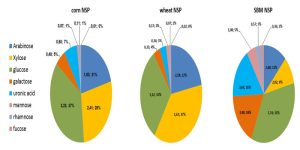The term “postbiotic” is increasingly found in the scientific literature and also on the commercial products over the last few years.
As the term is new and found increasingly popular, the correct idea about it should be taken as much as possible specially for one who wishes to work on it or get benefits from it.
The International Scientific Association for Probiotics and Prebiotics (ISAPP) defines prostbiotic with an aim to clear up the obscurities and best describes the core issues relating to postbiotics.
According to the new consensus definition of ISAPP, postbiotics are “a preparation of inanimate microorganisms and/or their components that confers health benefit on the host.”
If we look deep into the definition, we see-
- It’s a bioactive preparation; which means it must have a specific formulation and process to produce the microbial biomass for a specific role in the host.
It’s just not like that a killed microorganism in a liquid form having proven health effects is taken to formulate into another form to offer health benefits. Basically the bioactive preparation has to prove beneficial effects in the host, then the term postbiotic would be reserved for that preparation.
- It’s microbial in origin; by definition it’s a microbial origin and not only limited to bacteria, could also be from yeasts, molds, fungi for example.
Cell biomass must be present, so even organisms are not necessarily intact. The presence of microbial metabolites is not mandatory as per definition, but it is very relevant to be present in the preparation.
If the metabolites are separated by purification, they’re no longer considered as postbiotics. They are just metabolites- isolated or purified butyrate, enzymes, ethanol for example.
- It’s non-living; postbiotics must derive from a living microorganism but must be inactivated by a technological process like heat, high pressure, oxygen exposure (for strict anaerobes) etc.
That means postbiotics do not have to be derived from probiotics (benefit comes when microorganisms are alive) and Viruses, including bacteriophages (they are not considered living microorganisms).
Further, a probiotic product that loses cell viability during storage does not automatically qualify as a postbiotic; studies on the health benefit of the inactivated sate are still required.
- Microorganism must be specified; Taking an extract of microbes from a medium and then heat inactivating them would not be considered a postbiotic.
Like formulating probiotics, the selection of the right strain and scientific proven data are also of key importance when creating an effective postbiotic.
- It must confer health benefits to the host; The effects of the biomass must be specified for its beneficial effects and ensure adequate safety that not containing any components harms the host.
Although having potential health benefits of Vaccines, purified metabolites and chemically synthesized similar components would not qualify as postbiotics in their own right.
Postbiotics in Animal Nutrition & Health Management:
Probiotics, Prebiotics and Synbiotics are still hot topics in animal nutrition and health. For optimum performance all these must be fed alive and there is a controversy in the stability of these in the application process.
Thus, the interest in postbiotics has been increased because the health benefits of postbiotics come from the non-viable microbial mass and there is no need to worry about the survivability.
Moreover, based on till known the postbiotics mimic the function and activity of Probiotics, Prebiotics and Synbiotics when developed and applied properly.
Analyzing the limitation of viable microorganism based solution and the supplemental health benefits of non-viable microorganisms, the solution based on postbiotics is considered to be the most practical and next generation approach; the real hero in animal nutrition and health management.




